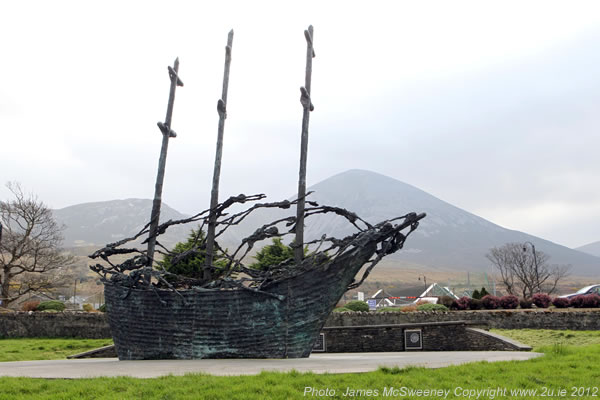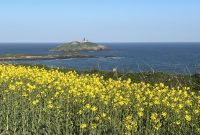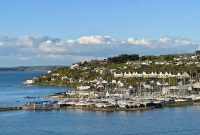Photo was taken at Murrisk (Muraisc), 8km west of Westport and is a little village at the foot of Croagh Patrick, Co.Mayo (Irl)
The famine of 1845 to 1849, was arguably the single greatest disaster in Irish history. One million people died from disease and starvation. Emigration accounted for the loss of another two million of Ireland’s population. Conditions aboard the ships transporting these already diseased and starving people resulted in the loss of so many lives that they became known as ‘Coffin Ships’
In 1996 Murrisk was chosen as an appropriate national site. John Behan, renowned sculptor, was commissioned by the Government to create a sculpture that would encompass the enormity of the loss and suffering endured by Ireland and its people. The composition of the National Famine Memorial, a bronze ship, with skeletal figures as its sails symbolises the many people who died in the ‘Coffin Ships’.
Thought on Tuesday – April – 24/04/2012
Photo was taken at Murrisk (Muraisc), 8km west of Westport and is a little village at the foot of Croagh Patrick, Co.Mayo (Irl)
The famine of 1845 to 1849, was arguably the single greatest disaster in Irish history. One million people died from disease and starvation. Emigration accounted for the loss of another two million of Ireland’s population. Conditions aboard the ships transporting these already diseased and starving people resulted in the loss of so many lives that they became known as ‘Coffin Ships’
In 1996 Murrisk was chosen as an appropriate national site. John Behan, renowned sculptor, was commissioned by the Government to create a sculpture that would encompass the enormity of the loss and suffering endured by Ireland and its people. The composition of the National Famine Memorial, a bronze ship, with skeletal figures as its sails symbolises the many people who died in the ‘Coffin Ships’.




